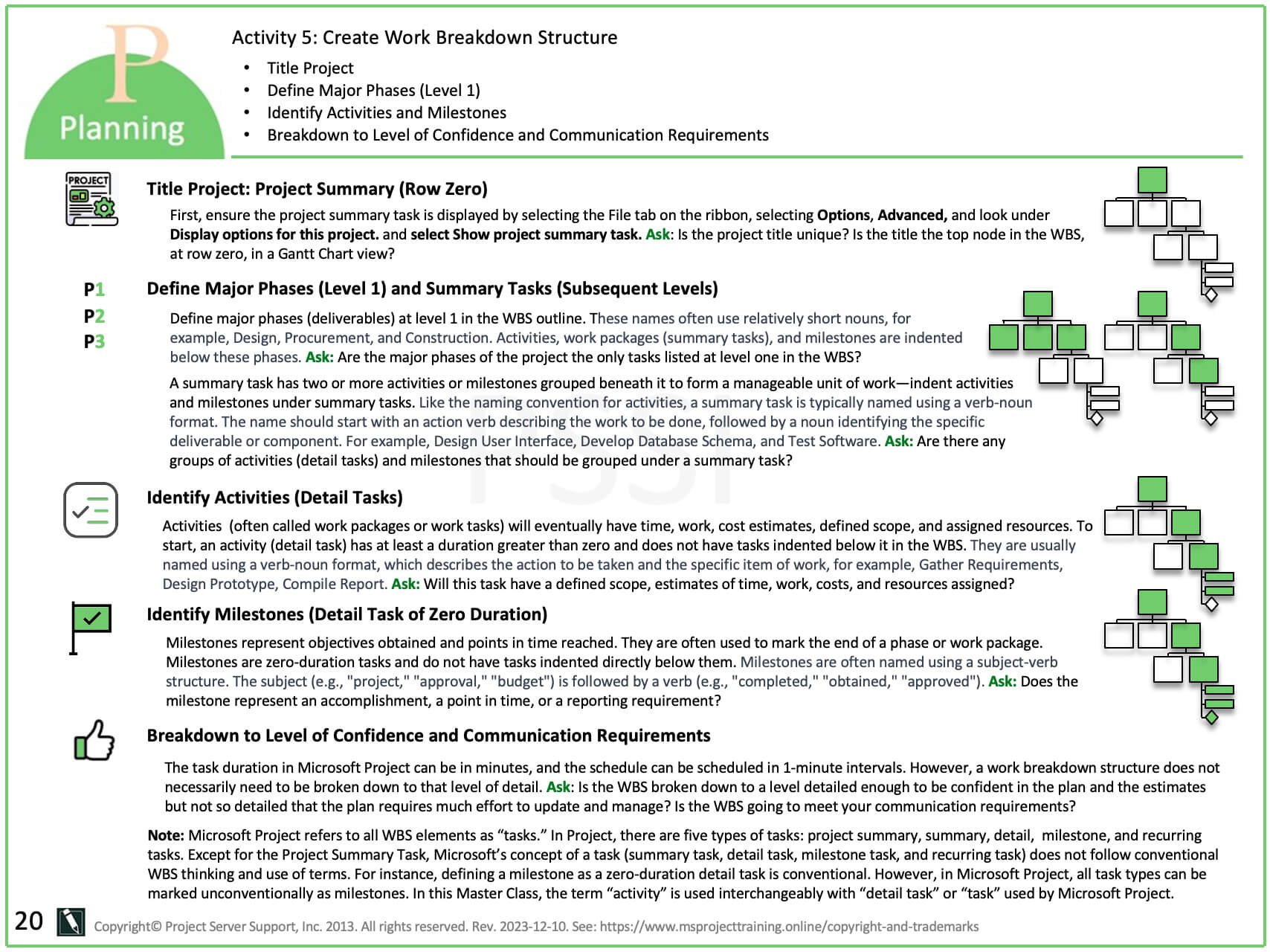Last Updated: February 16, 2022
Create Work Breakdown Structure Workflow
In this Activity (chapter), we delve into the meticulous process of constructing a Work Breakdown Structure (WBS), a fundamental step in project planning. Known as Activity 5, "Create Work Breakdown Structure," this stage is pivotal in translating project objectives within our constraints into tangible and manageable tasks.
Understanding the Project Summary (Row Zero)
We begin by establishing the groundwork with the Project Summary, ensuring that the project's overarching goal is prominently displayed as the top node in the WBS at row zero. This initial step involves setting up the project title uniquely and descriptively. The significance of a well-defined project title must be balanced, as it sets the tone and direction for all subsequent project phases.
Defining Major Phases (Level 1 Summary Tasks)
Next, we focus on segmenting the project into its major phases. These phases (stages or deliverables), represented as Level 1 Summary Tasks in the WBS, are the backbone of the project structure. We guide you through naming these phases succinctly and descriptively, using nouns that capture the essence of each deliverable. This section underscores the importance of clarity and conciseness in defining these critical project milestones.
Work Packages and Activity Identification
As we delve deeper into the WBS, we explore the concept of Work Packages, which are integral to organizing and managing the project's various activities and milestones. This part of the chapter emphasizes grouping tasks into coherent and manageable units, using a verb-noun naming convention that clearly outlines the work.
In parallel, we examine identifying specific activities or Detail Tasks, crucial for detailed planning and resource allocation. The emphasis here is on assigning clear, actionable names to these tasks, ensuring each activity is well-defined in scope, duration, cost, and resources.
Milestone Mapping and WBS Detailing
An essential part of the WBS is identifying Milestones, which are significant progress markers within the project or representatives of identified SMART+A Objectives. We guide you in characterizing these milestones, focusing on their representation as zero-duration tasks and the importance of their naming convention in reflecting achieved objectives.
Furthermore, we discuss the WBS's granularity, balancing the need for detail with the practicality of project management. This part of the chapter provides insights into breaking down tasks to a level that instills confidence in the plan and facilitates effective communication while avoiding overcomplication.
Reconciling Microsoft Project's Task Types with WBS
The chapter concludes by critically examining how Microsoft Project categorizes tasks and how this aligns—or sometimes diverges—with conventional WBS terminology and practices. We explore the nuances of project summary tasks, summary tasks, detail tasks, milestone tasks, and recurring tasks, offering a clear understanding of how these elements integrate within the framework of Microsoft Project.
Level 1 (Phases, Stages, or Major Deliverables) in the Work Breakdown Structure


